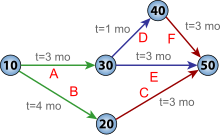 |
| No. 8 Typhoon Signal |
While travelling in Hong Kong, I had the fortune of experiencing what they call a No. 8 Typhoon warning signal. During such an occasion, most of the locals refrain from attending work, unless the warning is lifted before 2 o'clock in the afternoon, at which point a large portion of the population scrambles to get to their office chairs. Always a stickler for efficiency, I'd like to examine this particular rule as an example of what I believe to be a significant drain on the population. In the following paragraphs, I will attempt to explain my view from the perspectives of psychology, project management theory, and infrastructural efficiency. And finally, I'll attempt to address some likely counter-arguments.
Psychology of Motivation
 |
| Aren't those some nice blue skies? |
Management of Expectations
The management of expectations is a crucial part of what allows people to function productively. When autonomy is removed by giving them the plausibility of a full day off, we stress the population by not letting them know what to expect. On one hand is the possibility of a full day off where individuals can be care-free to relax and rest for a full day. On the other hand is the possibility of having to return to work after what might have been a very relaxing lunch with family and friends.
Not knowing what's going to happen drives down people's mood. And guess what, when people don't know what to expect, they cannot fully enjoy the productive benefits of time off so that when they are required to come back to work, their productivity will suffer as a result.
People are often best motivated by intrinsic motivators (things they want to do) rather than extrinsic motivators (things they are doing because of an external incentive or punishment). If you tell them that they might be required to do something, you are not helping them to do their best work. This is especially the case since you only "might" ask them to come in.
Constant Task Switching
In my previous post on The Myth of Multi-tasking, I referred to a Psychology Today article which described task-switching as "expensive". When you are required to switch tasks often, your tasks tend to take more time, you make more mistakes, and you also tire yourself out. Task-switching is exactly what is happening in the morning of the No. 8 Typhoon warning. Since you must always keep an eye (or ear) out to see when and if the warning is lifted, you will always constantly be switching between relaxing or working on something at home and having your ears glued to the news channel. This lingering uncertainty costs every single person the time that could be better spent on more productive things.Project Management Theory
 |
| Don't worry if you don't understand it, it still looks cool. |
Risk Management (Reduction of Uncertainty)
One principle I always draw people's attention to is that of the reduction of uncertainty (a term I find more practicable than risk management). You should never take on variables (i.e. make commitments) to things where the variability or risk is not known, or at least managed. Just like how a savvy fund manager would never take on a position without a known hedge or a controlled risk management strategy, neither should you in the way you conduct your life.By allowing employees to take on this kind of risk when there is no substantial benefit (read more below), it is wholly unwise from a project management perspective to follow this 2PM rule. You are essentially creating uncertainty when the benefits do not compensate for it.
Decision Theory
Lingering decisions are costly. If you have ever looked into the field of project management, you have probably heard of the Critical Path Method. Essentially, the critical path method allows you to model a project by evaluating the best and worst possible end points in a project. In other words, the critical path is the one in which the minimum time is required for a project to be completed when taking into account all the dependencies.When the 2PM rule is in effect, we are inducing the time until 2PM to become part of the critical path. We are essentially injecting a dependency (which lasts till 2PM), the length of which delay the critical path of our project (whatever that may be). So the completion of certain tasks now depends on whether or not the warning will be lifted in the time before 2PM. Any certified PMP should see this as a huge no-no.
Infrastructure
 |
| A lot of thinking went into building the world around us. |
A lot of people (read: non-engineers) actually aren't aware of this, but many systems part of our infrastructure that we use on a daily basis is based upon the assumption of a relatively predictable cycle.
Power Throttling
Much of the power grid, and many other operating devices within large buildings are programmed to throttle power (and air conditioning) based upon an expected working cycle. When people come in in the morning, workers expect the air to be perfect so such systems have to anticipate this and cool the air in advance. What happens when people come in after 2PM is that these systems might have been working all morning, wasting energy. Worse yet, if these systems were previously off, they would have to break their thermal inertia and be turned on for the measly few hours of the half work-day. Without trying to explain thermal inertia too much, let me just say that: changing the temperature requires a lot more energy than simply keeping the temperature at a certain level.Peak Cycle Management
Pretty much the same idea as the previous paragraph, but just to show you the scope of things, I want to talk about elevators. A couple years ago, I bought a textbook called the "Elevator Traffic Handbook". In this book, it mentioned the different cycles (including lunch breaks) of people flow which needs to be accounted for when developing not only the elevator algorithms, but also the hallways and lobbies where people frequent.So much of the way we've engineered the world around us is dependent on this type of predictability. Knowing beforehand the times of the peak cycle and designing around it has allowed us to achieve efficiency the likes of which the world has never seen before. But guess what happens when we ignore that and tell everyone to go in to work at 2PM? Long bus lines, crowded office lobbies, electrically strained micro power grids, etc.
Counter-Arguments
 |
| I'm right! You're wrong! |
What about people with really important work?
The people who have really important work are already at work. Some of which have actually braved their way into the office earlier that morning or even better are probably telecommuting from home. If you have an important meeting or some deadline to meet, any society with a reasonable level of professionalism should know that those things should and would get done no matter what (otherwise you deserve to be fired).People need those few hours of productivity
No they don't. As I've explained above, those few hours of work is not going to be very productive. Having been mentally stressed and then having to stand inside crowded trains while cursing the weather for not continuing to be worse does not really prepare the average employee to be a productive individual. On most working days, the afternoons already tend to be less productive than the mornings. Adding onto the fact that these employees are being forced to be there after having been given a slight sip of freedom in the morning, the expected productivity of those hours go way down.In the end, you really have to look at it from a cost/benefit approach. Yes, maybe they can actually get a few things done in those last few hours of the working day. But if we as a society consider the costs as I've noted above, is it really worth it?
Here's to a more healthy, happy, and productive society; let's get rid of the 2PM rule.
Note
I understand that this doesn't apply to all employers. In fact, many employers seem to give people the entire day off. But it's the mindset of the population that I would like to change. The closed-mindedness of viewing those few hours of work as being some kind of ambrosia which will rejuvenate your struggling company is going to end up killing your productivity instead.


